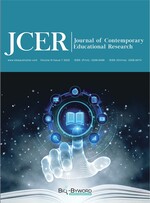Abstract
Teaching evaluation refers to the process of measuring and giving value judgment to the process and results of teaching activities by using effective technical means. Through teaching evaluation, teachers can direct the teaching process to develop toward the predetermined goal and effectively complete the teaching task. This paper investigates the function of teaching evaluation in the Machine Translation course in Northeastern University. The function of teaching evaluation for teachers includes adjustment, diagnosis, teaching stimulation, and orientation. The function of teaching evaluation for students includes feedback, guidance, intensification, and purpose orientation. This paper also discusses the influence of teaching evaluation on the psychology of both, teachers and students. Positive evaluation can improve the enthusiasm of teachers and students, but other times, it may reduce their enthusiasm, whereas when negative evaluation and guidance are appropriate, the enthusiasm of teachers and students may improve. This research reveals that a reasonable teaching evaluation plays a huge role in promoting the psychology of both, teachers and students.
References
Millman J, 1981, The New Handbook of Teacher Evaluation, Sage Publications, London.
Phye GD, 1996, Handbook of Classroom Assessment: Learning, Achievement and Adjustment, Academic Press, Cambridge.
Novak JD, Gowin DB, 1984, Learning How to Learn, Cambridge University Press, Cambridge.
Wu HL, Wang K, 2021, Proceedings of the 2021 2nd International Conference on Information Science and Education, November 26-28, 2021: Natural Language Processing Subject Organizing by TTD Model Based on Stepwise Refinement Framework. IEEE, Chongqing, 353–356.
Buzan T, Buzan B, 1996, The Mind Map Book: How to Use Radiant Thinking to Maximize Your Brain’s Untapped Potential, Plume, New York.
Wu HL, Zhang F, Cheng JW, et al., 2019, Proceedings of the 2019 2nd International Conference on Humanities Education and Social Sciences, October 25-27, 2019: Determine Teaching Content Using a Bottom-up Approach. Atlantis Press, Xi’an, 597–600.
Wu HL, Zhou RY, Wang K, 2017, Proceedings of the International Conference on Computer. Electronics and Communication Engineering, DEStech Transactions on Computer Science and Engineering, June 25, 2017: The Structure of Domain Entity Attribute Semantic Knowledge Base for Natural Language Processing. DEStech Publications, Sanya, China, 616–619.
Stufflebeam DL, Coryn CLS, 2014, Evaluation Theory, Models, and Applications, 2nd Edition, Jossey-Bass, Indianapolis.
Wu HL, Wang K, 2020, Proceedings of the 2020 International Conference on Information Science and Education, December 4-6, 2020: Design of the Introduction Part of Information Processing and Machine Translation Course for Students Majoring in Computer Science and Technology. IEEE, Sanya, 543–546.
Novak JD, 1977, A Theory of Education, Cornell University Press, Ithaca.
Wu HL, Wang K, 2020, Proceedings of the 2020 International Conference on Information Science and Education, December 4-6, 2020: Organization of Knowledge Engineering Subject Using TTD Model Based on Stepwise Refinement Framework. IEEE, Sanya, 319–322.
Perry RP, Smart JC, 2007, The Scholarship of Teaching and Learning in Higher Education: An Evidence-Based Perspective, Springer, Dordrecht.
